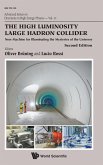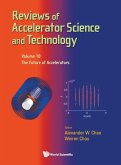The first part of this book introduces the basic principles necessary to understand silicon strip detectors in general and the specific implementation for the CMS experiment. It features an in- depth discussion of the fundamental background on semiconductor technology, which is followed by the most important aspects of designing and manufacturing a modern silicon strip sensor. A short introduction into the CMS experiment and its silicon tracker complements the first part. In the second part, the luminosity upgrade of the LHC accelerator (sLHC) is discussed and the challenges it poses to the CMS tracker. A review of the current findings of the RD50 collaboration tries to identify a sufficiently radiation hard base material while the subsequent chapter concentrates on quality assurance. In the final chapter a new interconnection technique between sensor and readout electronics is introduced and the results from first test prototypes are discussed.
Bitte wählen Sie Ihr Anliegen aus.
Rechnungen
Retourenschein anfordern
Bestellstatus
Storno








